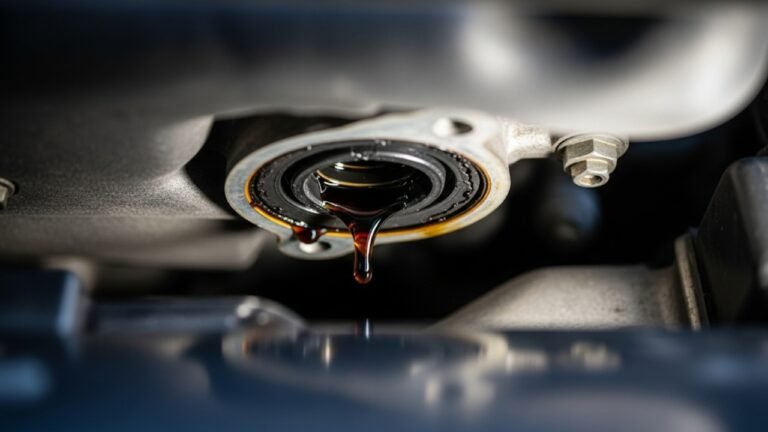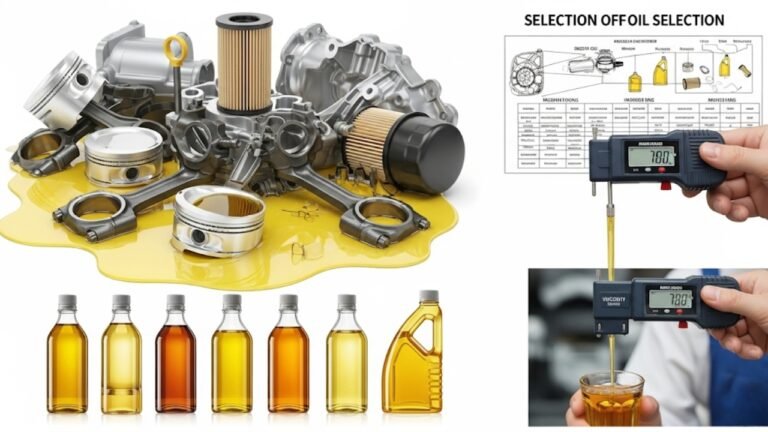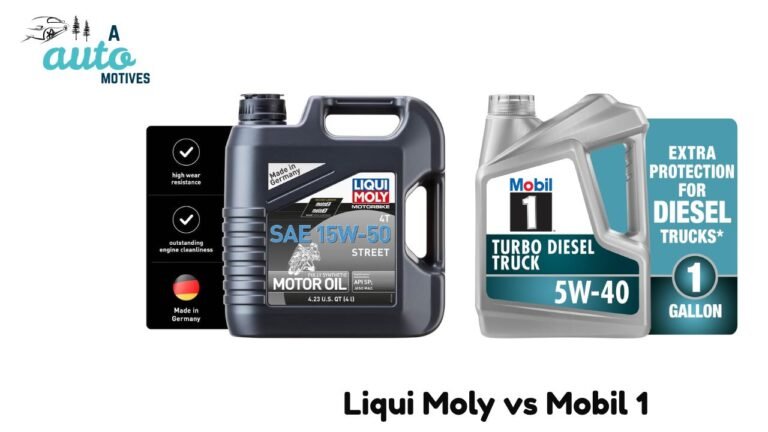How to Know When Do You Change Oil in a Car

Let me tell you a quick story.
Last year, my cousin Alex called me from the side of the highway. His car had suddenly stalled, and he had no idea why. Turns out, he hadn’t changed his oil in over a year. The engine was cooked—literally. That single mistake cost him nearly $3,000. What’s worse? It could’ve been prevented with a $40 oil change.
So, when do you change oil in a car? That’s the golden question.
This isn’t just about cars—it’s about peace of mind. It’s about keeping your car running smooth, saving you money, and avoiding stressful breakdowns. Think of motor oil as the lifeblood of your engine. Without fresh, clean oil, your engine suffers. And when your engine suffers, your wallet cries.
Let’s break this down simply, the way a good friend would explain it over a cup of coffee.
The Golden Rule: Understand Your Car’s Oil Change Schedule

In the past, people would just say, “Change it every 3,000 miles.” But that’s outdated advice now. With modern engines and synthetic oils, that number’s changed. For many cars today, the real answer to when do you change oil in a car is:
-
Every 5,000 to 7,500 miles for synthetic oil.
-
Every 3,000 to 5,000 miles for conventional oil.
-
Or, every 6 to 12 months, whichever comes first.
Let’s break it down in a table for easy understanding:
| Type of Oil | Driving Style | Mileage Interval | Time Interval |
|---|---|---|---|
| Conventional | Normal | 3,000 – 5,000 miles | 6 months |
| Synthetic Blend | Moderate | 5,000 – 7,000 miles | 6-9 months |
| Full Synthetic | Highway/City Mixed | 7,500 – 10,000 miles | Up to 12 months |
It’s not one-size-fits-all. Your car manual is the best place to start. It’s like the love letter from the engineers who built your car. Still, most people don’t read it.
So here’s a tip: mark it in your calendar or set a reminder on your phone.
Listening to Your Car: Real-Life Signs It’s Time to Change Oil
Sometimes, your car talks to you. Not literally, of course—but through sounds, smells, and signals.
Here are a few signs your car might be begging for an oil change:
-
Dark, dirty oil: Check the dipstick. Clean oil is amber and transparent. Dirty oil looks like sludge.
-
Engine noise or knocking: Oil reduces friction. If it’s old, metal parts grind.
-
Oil change light: This one’s obvious—but don’t ignore it!
-
Exhaust smoke: Not just vapor—real blue or black smoke can mean burning oil.
-
Oil smell inside the car: Could mean a leak or overheating engine.
I remember once smelling something like burnt toast inside my Civic. Sure enough, the oil level was dangerously low. I topped it off and got to the mechanic the next morning. Saved myself a blown gasket.
So, trust your gut. If it smells off, sounds odd, or just feels wrong—change the oil.
How Driving Habits Affect Oil Change Frequency
Not all drivers are the same.
Let’s compare two drivers:
-
Emma drives 10 miles a day to work in slow traffic.
-
Jake drives 60 miles on open highways every morning.
Even if they drive the same car, Emma will need more frequent oil changes. Why? Because short trips and stop-and-go traffic don’t let the engine fully warm up. That leads to moisture build-up in the oil, which causes faster breakdown.
Here are some driving habits that can shorten your oil’s life:
-
Frequent short trips (under 5 miles)
-
Heavy traffic commutes
-
Towing or hauling
-
Extreme hot or cold climates
-
Driving on dusty or gravel roads
So, if your routine involves lots of city driving or hard conditions, you may want to change oil every 3,000 to 5,000 miles—even with synthetic.
Think of it like this: your oil works harder when you push your car harder.
Choosing the Right Oil: What Kind Should You Use?
Okay, so you know when do you change oil in a car, but what about which oil?
There are so many types. It can feel like walking into a grocery store and seeing 47 types of peanut butter.
Here’s a quick guide:
-
Conventional Oil: Cheap and basic. Fine for older cars or simple engines.
-
Synthetic Blend: Mix of synthetic and conventional. Better protection, still affordable.
-
Full Synthetic: Best for modern engines. Cleans and protects better. Costs more, but lasts longer.
-
High Mileage Oil: Designed for cars over 75,000 miles. Has conditioners for older seals.
Most cars today are designed for synthetic oil. It flows better in cold, protects in heat, and resists breaking down. That means longer engine life, fewer problems, and fewer oil changes.
But check your owner’s manual—or ask a trusted mechanic.
Bullet Recap: Key Things to Remember
Let’s keep this easy to remember:
-
Change oil every 5,000–7,500 miles (or 6–12 months).
-
Use synthetic oil for modern engines.
-
Listen to your car—smells, noises, or smoke can all be signs.
-
️ City driving = more frequent oil changes.
-
Read your manual. It knows best.
-
Set a reminder. Your car won’t nag you until it’s too late.
A Personal Lesson: What I Learned the Hard Way
I used to delay oil changes. I’d say, “Ah, I’ll do it next weekend.” Then next weekend became next month. I skipped one entirely. My engine started hesitating. Then the oil light flashed. I pulled into a quick-lube station just in time.
The mechanic showed me the oil—black as tar.
“You’re lucky you came in today,” he said. “Another 500 miles, and you’d be looking at engine damage.”
Lesson learned. Now, I never skip it.
Changing your oil is like brushing your teeth. It’s not exciting. But skip it, and you’re in for pain later.
DIY vs. Professional Oil Changes: What’s Better for You?
Some people love rolling up their sleeves and getting their hands dirty. Others prefer sipping coffee while a pro handles the grime.
So what’s better—doing it yourself or going to a mechanic?
DIY oil changes can save you money. You’ll probably spend $25–$40 on supplies: oil, filter, and a pan. It gives you full control and a sense of satisfaction. Plus, you can do it on your own schedule.
But it’s not for everyone. You need:
-
A safe place to work (flat ground, proper lighting)
-
Tools (wrenches, funnel, jack, ramps)
-
Time and patience
One time, I tried changing my oil without gloves. My hands smelled like a gas station for three days. Lesson: wear gloves, always.
On the flip side, professional oil changes are quick and usually cost between $40–$70 for conventional, or up to $100 for synthetic. The big bonus? They often include a free inspection—tires, fluids, brakes.
If you’re short on time or unsure what you’re doing, let the pros handle it.
The Environmental Side: Where Does Used Oil Go?
Here’s something most folks don’t think about—used motor oil is toxic. One single gallon of it can contaminate a million gallons of water.
So whether you do it yourself or hire someone, you’ve got to make sure that oil is disposed of properly. Never dump it down a drain, in the trash, or on the ground.
If you change it yourself, most auto parts stores like AutoZone, O’Reilly, or Advance Auto Parts will take your used oil for free. They recycle it or dispose of it according to strict rules.
A few reminders for eco-friendly oil disposal:
-
Use a sealed container for old oil.
-
Keep oil filters separate—they also need proper disposal.
-
Don’t mix with other fluids like coolant or gasoline.
By responsibly disposing of oil, you’re doing your part for cleaner water, air, and soil. It’s a small thing that makes a big difference.
How Oil Changes Affect Your Car’s Resale Value
Let’s talk money.
When you sell your car—or trade it in—the buyer or dealer will ask about maintenance. If you’ve skipped oil changes or don’t have records, it raises a red flag. People will wonder what else you might have ignored.
But if you’ve changed the oil regularly, kept receipts, or used an app to log services, it tells a different story: This car’s been loved.
Regular oil changes can boost resale value by hundreds—even thousands—of dollars. It’s a small investment now that pays off later.
A friend of mine sold his 10-year-old Corolla last summer. He had every oil change logged in a little notebook. The buyer was so impressed, they didn’t even haggle on price.
So next time you get an oil change, snap a picture of the receipt or store it in your glove box. Your future self will thank you.
Common Myths About Oil Changes You Should Ignore
There’s a lot of old advice out there—and some of it is just wrong. Let’s bust a few myths.
Myth 1: You must change your oil every 3,000 miles.
Truth: Not anymore. That advice was true in the 80s and 90s, but modern engines and synthetic oils last longer.
Myth 2: Black oil means it’s bad.
Truth: Not always. Oil naturally darkens as it does its job. The key is whether it’s thick and sludgy, not just dark.
Myth 3: Synthetic oil causes leaks.
Truth: Older engines with worn seals might leak no matter what oil you use. Synthetic doesn’t cause leaks—it just finds them faster.
Myth 4: You can’t switch back to conventional oil after using synthetic.
Truth: Totally false. You can switch back and forth without harm. Just don’t mix them in the engine.
Bottom line? Trust your manual, not myths. Or ask a mechanic who knows your car.
Oil Life Monitors: Can You Trust Them?
Many modern cars come with oil life monitors—a digital percentage that tells you how much life your oil has left.
Sounds high-tech, right? But can you trust it?
Mostly, yes.
These monitors don’t just track miles—they consider driving conditions, engine temperature, idle time, and trip length. If you sit in traffic a lot or drive in the cold, it adjusts accordingly.
Still, it’s smart to double-check manually, especially if:
-
Your car is older (before 2010)
-
You drive in severe conditions
-
The light hasn’t come on, but it’s been 8 months
Think of it like a fitness tracker. It gives you a general idea, but doesn’t replace your own awareness.
If in doubt, pop the hood and look at the oil yourself. Trust but verify.
The Emotional Side of Car Care: Why Oil Changes Build Trust
Cars are more than machines. They carry our kids, take us to work, and get us through storms. They’re part of our lives.
And taking care of your car—especially something as simple as an oil change—is a form of respect. It says, “I care enough to protect this thing that protects me.”
There’s something satisfying about doing the right thing before it becomes urgent. It gives you peace. A quiet confidence.
I’ve driven old beaters and brand-new SUVs. The one thing they all had in common? They ran better when I kept up with oil changes.






